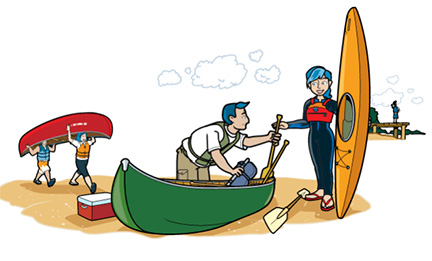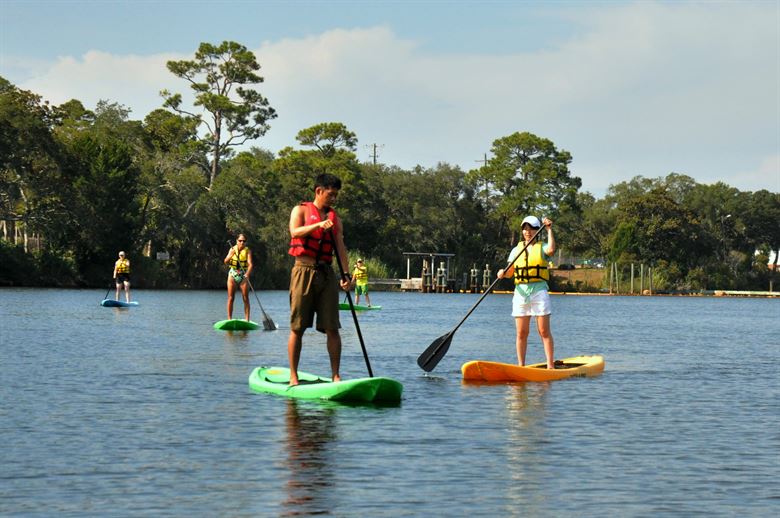Why is paddle sport safety so important?
- According to national and state recreational boating accident data, paddle craft are at a higher risk of capsizing and swamping than motorized boats.
- The leading cause of paddling deaths is drowning. In many cases, victims were not wearing life jackets.

Here are the top ten safety tips recommended by the Boating Program:
- Get educated
All paddlers are responsible for knowing laws and keeping themselves and others safe. At a minimum, people should take a course to learn about paddle sport safety, emergency procedures and navigational rules. - Learn how to self-rescue
Paddle craft are typically safe, but paddlers are at a higher risk of going overboard than operators and passengers in motorized watercraft. Capsize puts paddlers in danger of cold-water immersion shock, loss of gear and other life-threating situations. Paddle experts recommend learning self-rescue techniques. It is recommended to start with an instructor and hands-on training. Some self-rescues techniques are not easy, and they all require practice. - Always wear a life jacket
Do not risk your life, wear a life jacket. - File a float plan
Paddlers are encouraged to study their route in advance. Before going out on the water, even for a brief time, paddlers should always share their plan with a friend or loved one. - Carry essential gear
Paddlers should carry essentials for safety, emergency communications and comfort. Paddlers should carry a sound-producing device, such as a whistle – even on a stand-up paddleboard. Safety equipment varies. Paddlers should research options and choose appropriately for their activity. - Avoid alcohol and drugs
Operating any vessel while under the influence of alcohol or drugs is not only unsafe—it’s illegal. - Check and understand the weather
Paddlers should check the weather frequently before and during their trip. When evaluating conditions and forecasts, paddlers should check warnings, weather conditions, wind and wave forecasts, tides and river flows. - Protect against cold-water shock
Falling into water under 60 degrees is dangerous, even during hot weather. Cold-water shock — not hypothermia — occurs in the first stage of immersion and poses significant threat. Paddlers should avoid cotton and wear synthetic materials when a wet or dry suit is not available. Be prepared and wear a life jacket. - Be visible to other boaters
People should paddle to be seen by wearing bright neon colors that contrast with their surroundings. Highly reflective tape on paddles, a flagpole and a bright light will alert bigger boats to the presence of paddle craft. - Always wear a leash
Stand-up paddlers must wear a leash. Staying tethered to a paddleboard provides extra flotation and minimizes the risk of being separated from the board. Many types of leashes are available (coiled, hybrid, straight, quick release). Different leashes are appropriate for different waterways. Paddlers need to research which leash is right for them.
